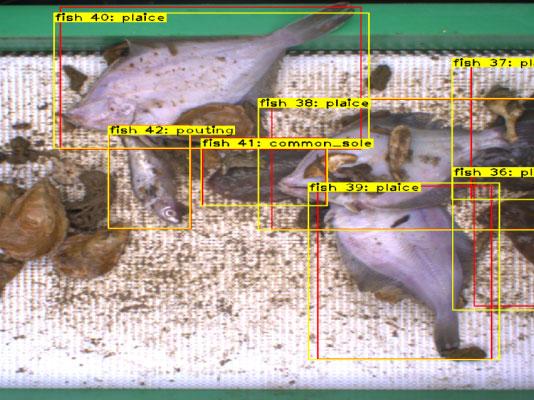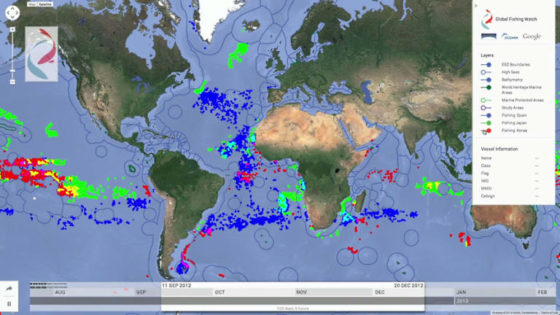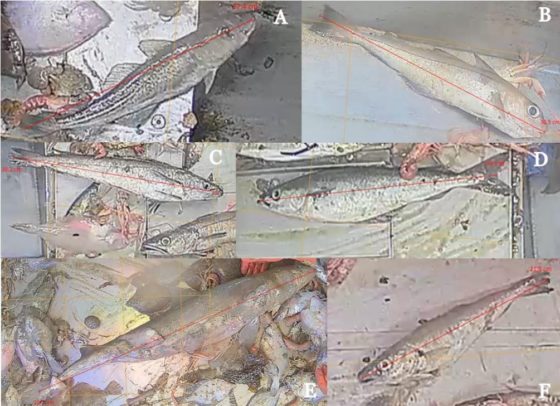Examples of digital monitoring in fisheries that are in use today
On the 31st of May The Fisheries Secretariat hosted a webinar on Advances in Digital monitoring in fisheries. The objective of this event was to showcase projects that are in use today and have the potential to be a game changer in improving the sustainability of fisheries. We invited three experts from different fields to explain their project in detail, this provided a unique overview of possibilities.
The full webinar can be viewed on here our YouTube channel
Fully Documented Fisheries in Dutch beam trawlers
 This project led by Dr. Edwin van Helmond from Wageningen Marine Research together with the Dutch PO VisNed and Agro Food Robotics aims at getting accurate data on catch composition in mixed fisheries both of species composition and size of fish caught. By making use of machine learning, whereby they ‘teach’ an algorithm to differentiate between different fish species they can quite accurately assess the full catch. In some cases, skates for example, the computer even does better than a human expert. This technique was developed as a strategy to better implement the Landing Obligation as that relies more than anything on getting accurate catch information to make sound management decisions.
This project led by Dr. Edwin van Helmond from Wageningen Marine Research together with the Dutch PO VisNed and Agro Food Robotics aims at getting accurate data on catch composition in mixed fisheries both of species composition and size of fish caught. By making use of machine learning, whereby they ‘teach’ an algorithm to differentiate between different fish species they can quite accurately assess the full catch. In some cases, skates for example, the computer even does better than a human expert. This technique was developed as a strategy to better implement the Landing Obligation as that relies more than anything on getting accurate catch information to make sound management decisions.
Part of their work has been published in ICES Journal of Marine Science
Transparency in fisheries using satellite data
 Luca Marsaglia, data engineer at Global Fishing Watch (GFW) gave an introduction to the functionality of their mapping tools. GFW is an international NGO that works around the world on making fishing operations and other human activities at sea visible by using satellite technology, machine learning and data visualisation. A unique part of their program is that all their data is publicly available through a geographical information system. Their map making tool allows everyone to access accurate data on vessel movements that can be overlaid with other spatial or temporal information to gain a better understanding of what is going on at sea. This has been used for example to monitor activities in and around Marine Protected Areas or to track instances of modern slavery in high seas fisheries. After successful projects in South America and Africa they are now starting to work in Europe.
Luca Marsaglia, data engineer at Global Fishing Watch (GFW) gave an introduction to the functionality of their mapping tools. GFW is an international NGO that works around the world on making fishing operations and other human activities at sea visible by using satellite technology, machine learning and data visualisation. A unique part of their program is that all their data is publicly available through a geographical information system. Their map making tool allows everyone to access accurate data on vessel movements that can be overlaid with other spatial or temporal information to gain a better understanding of what is going on at sea. This has been used for example to monitor activities in and around Marine Protected Areas or to track instances of modern slavery in high seas fisheries. After successful projects in South America and Africa they are now starting to work in Europe.
The Global Fishing Watch Map can be accessed here
Video monitoring in Danish Nephrops trawls
 Denmark is one of the first EU countries to start implementing an Electronic Monitoring program in part of their fishing fleet which can actually be used for enforcement purposes. Like the Dutch, the Danish struggled with the implementation of the Landing Obligation, especially in the Nephrops trawl fleet. This fleet segment is characterised by traditionally large levels of bycatch and operates in areas where they also interact with sensitive stocks like the North Sea cod. In 2019 they ran a CCTV trail, where footage was reviewed by trained technicians. They found that not only where they able to accurately view the bycatch levels of all vessels studied but they also witnessed a change in behaviour of the fishers. Even though there was no enforcement in this trail phase bycatch levels went down considerably in the catches. As of next year this technique will be rolled out to 68 vessels with 5% of hauls of each vessel checked and an additional 5% based on a risk assessment.
Denmark is one of the first EU countries to start implementing an Electronic Monitoring program in part of their fishing fleet which can actually be used for enforcement purposes. Like the Dutch, the Danish struggled with the implementation of the Landing Obligation, especially in the Nephrops trawl fleet. This fleet segment is characterised by traditionally large levels of bycatch and operates in areas where they also interact with sensitive stocks like the North Sea cod. In 2019 they ran a CCTV trail, where footage was reviewed by trained technicians. They found that not only where they able to accurately view the bycatch levels of all vessels studied but they also witnessed a change in behaviour of the fishers. Even though there was no enforcement in this trail phase bycatch levels went down considerably in the catches. As of next year this technique will be rolled out to 68 vessels with 5% of hauls of each vessel checked and an additional 5% based on a risk assessment.
The report of the pilot project can be viewed here
Even though the scale of all three projects is limited, each of them is fully operational and ready to be scaled up. Technological capabilities are clearly no longer a barrier to implementing Electronic Monitoring (EM) in EU fisheries. The current review of the Fisheries Control Regulation provides a perfect opportunity to make EM an integral part of fisheries management in the EU.
The full webinar can be viewed on here our YouTube channel